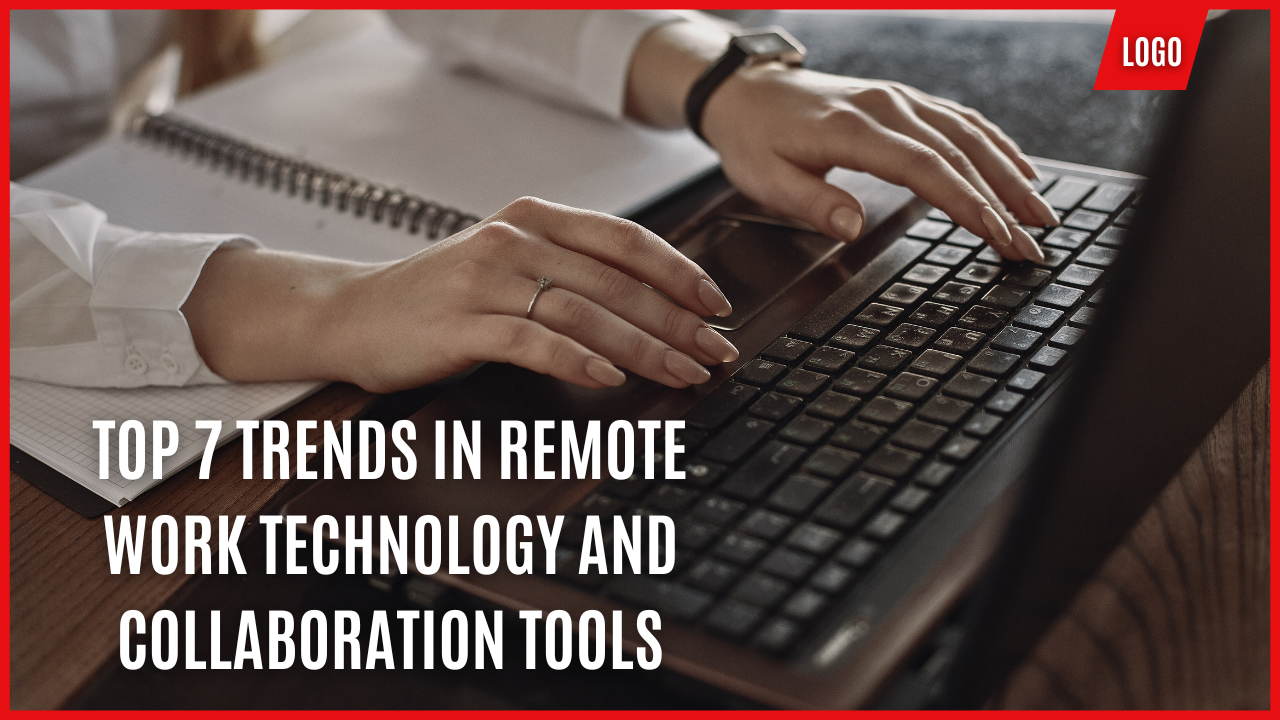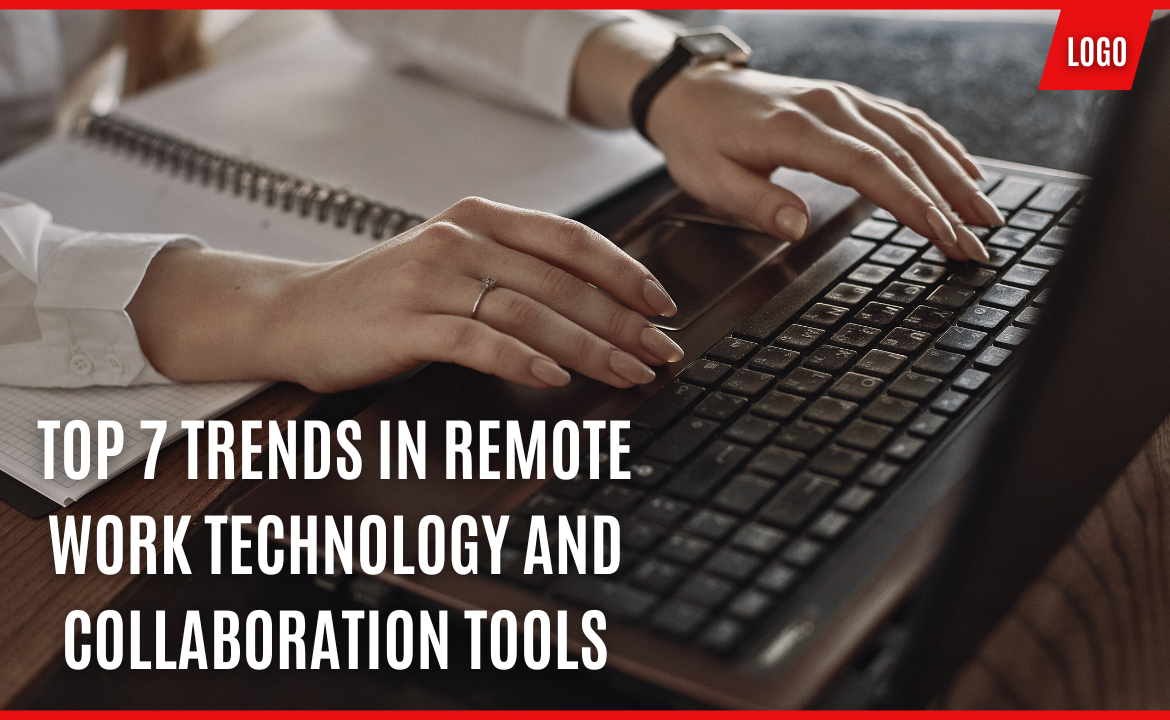Over the past few years, Remote work technology and collaboration tools has experienced significant growth, driven by the widespread adoption of flexible work setups and digital interconnectedness. From virtual communication platforms to project management software, both organizations and individuals are continuously searching for inventive solutions to boost efficiency, simplify processes, and encourage effective teamwork among dispersed teams. This introduction sets the stage for an exploration of the ever-evolving landscape of remote work technology, where ongoing innovations in communication, project management, and virtual collaboration tools are reshaping the dynamics of modern work and connectivity in a remote-oriented era.

Top 7 Trends in Remote Work Technology and Collaboration Tools are:
1. Hybrid Workspace Solutions
Hybrid workspace solutions represent a transformative approach to work that blends the benefits of remote and in-office environments. In response to the growing popularity of hybrid work models, organizations are adopting tools and technologies that facilitate seamless collaboration and communication across physical and virtual spaces.
These solutions prioritize flexibility, enabling employees to work from anywhere while still maintaining connectivity and productivity. They often incorporate a mix of hardware and software, such as cloud-based collaboration platforms, video conferencing systems, and digital whiteboards, to bridge the gap between remote and in-office team members.
One key aspect of hybrid workspace solutions is their ability to support various work styles and preferences. Whether employees choose to work remotely, from a coworking space, or in a traditional office setting, these tools ensure that they have access to the resources and support needed to perform their roles effectively. Hybrid workspace solutions promote inclusivity by leveling the playing field for all team members, regardless of their physical location. By breaking down geographical barriers and enabling real-time communication and collaboration, these tools foster a sense of belonging and cohesion among distributed teams.
2. AI-powered Productivity Tools
AI-powered productivity tools represent a cutting-edge approach to enhancing efficiency and effectiveness in the workplace. By harnessing the capabilities of artificial intelligence (AI), these tools automate tasks, provide valuable insights, and optimize workflows to help individuals and teams achieve their goals more effectively.
One of the key advantages of AI-powered productivity tools is their ability to streamline repetitive and time-consuming tasks. Through machine learning algorithms and natural language processing, these tools can automate email management, data entry, scheduling, and other routine activities, freeing up valuable time for more strategic and creative work. AI-powered productivity tools offer intelligent insights and recommendations based on data analysis. By analyzing patterns and trends in user behavior, these tools can provide personalized suggestions for prioritizing tasks, optimizing schedules, and improving work habits, ultimately helping users make more informed decisions and achieve better outcomes.
3. Virtual Reality (VR) Collaboration
Virtual Reality (VR) collaboration is revolutionizing the way teams work together, offering immersive experiences that transcend physical boundaries. By leveraging VR technology, remote teams can interact and collaborate in virtual environments as if they were in the same room, regardless of their geographical locations.
The key advantages of VR collaboration is its ability to enhance communication and engagement. Through VR headsets and spatial audio, team members can communicate in real-time, share ideas, and collaborate on projects in a highly immersive and interactive manner. This fosters a sense of presence and closeness that traditional video conferencing tools often struggle to replicate.
It enables teams to visualize and manipulate 3D models and data in a virtual space, facilitating more effective brainstorming, design reviews, and problem-solving sessions. This hands-on approach to collaboration can lead to greater creativity, innovation, and productivity among team members. It offers cost-saving benefits by reducing the need for travel and physical meeting spaces. With VR, teams can convene virtually, eliminating the time and expense associated with traditional face-to-face meetings.
4. Enhanced Security Measures
Enhanced security measures in remote work technology and collaboration tools are critical in safeguarding sensitive data and protecting against cyber threats. With the proliferation of remote work, ensuring the security and privacy of digital communications and information has become a top priority for organizations worldwide.
Key aspect of enhanced security measures is the implementation of robust encryption protocols. End-to-end encryption ensures that data transmitted between users remains confidential and cannot be intercepted by unauthorized parties. Additionally, encryption at rest secures data stored on servers or devices, further safeguarding against unauthorized access. Multi-factor authentication (MFA) has become increasingly prevalent in remote work environments. By requiring users to verify their identity through multiple methods, such as passwords, biometrics, or one-time codes, MFA adds an extra layer of protection against unauthorized access, even in the event of compromised credentials.
Overall, enhanced security measures play a crucial role in enabling safe and secure remote work environments.
5. Integration of Communication Platforms
The integration of communication platforms is a pivotal trend in remote work technology. It is offering streamlined workflows and enhanced collaboration for distributed teams. This trend involves the convergence of various communication tools, such as video conferencing, instant messaging, email, and voice calls, into unified platforms or ecosystems.
By consolidating communication channels within a single interface. Integration enhances efficiency and productivity by reducing the need to switch between multiple applications. This seamless user experience fosters smoother collaboration and faster decision-making processes among team members. Regardless of their physical location. Integrated communication platforms promote transparency and accessibility by centralizing conversations, documents, and project updates in one place. This ensures that team members have easy access to relevant information and can stay informed about the progress of ongoing initiatives.
The integration of communication platforms represents a significant advancement in remote work technology. Enabling more efficient and effective collaboration among distributed teams.
6. Focus on Employee Well-being
The focus on employee well-being has emerged as a prominent trend in remote work technology and collaboration tools. Reflecting a growing recognition of the importance of supporting employees’ mental, emotional, and physical health in the digital workplace.
Remote work technology platforms are integrating features designed to promote mindfulness, stress reduction, and work-life balance. For example, some tools offer built-in meditation sessions, relaxation exercises, or digital wellness tracking to help employees manage stress and maintain a healthy lifestyle while working remotely. Collaboration tools are incorporating features that support flexible scheduling, asynchronous communication, and boundary-setting to prevent burnout and promote work-life harmony. These features empower employees to set their own pace, establish healthy boundaries between work and personal life, and prioritize self-care without sacrificing productivity.
7. Augmented Reality (AR) for Remote Assistance
Augmented Reality (AR) for remote assistance is a transformative application of technology. That enables real-time support and guidance for tasks that require hands-on expertise, regardless of physical location. By overlaying digital information onto the user’s real-world environment. AR-enabled remote assistance tools provide remote workers with virtual guidance and instructions, enhancing productivity, efficiency, and accuracy.
Advantages of AR for remote assistance is its ability to bridge the gap between experts and field workers. Enabling instant collaboration and knowledge sharing. Using AR-enabled smart glasses or mobile devices. Remote experts can remotely visualize the task at hand, provide step-by-step instructions, and annotate the user’s environment in real-time. Facilitating problem-solving and troubleshooting. AR for remote assistance minimizes the need for costly and time-consuming travel. Experts can provide support remotely without having to be physically present on-site. This not only saves time and resources but also enables organizations to respond more quickly to issues and reduce downtime.
Conclusion
In conclusion, the trends in remote work technology and collaboration tools represent a paradigm shift in the way we work, communicate, and collaborate. From hybrid workspace solutions and AI-powered productivity tools to virtual reality collaboration and augmented reality for remote assistance. These advancements are reshaping the remote work landscape, offering unprecedented flexibility, efficiency, and connectivity for distributed teams. With a focus on enhanced security measures, employee well-being, and seamless integration of communication platforms. Organizations are embracing innovative solutions to meet the evolving demands of remote work, driving productivity, innovation, and success in the digital age.
Also Read:
- What is Dividend Investing and How to find Dividend Stocks?
- How do new mobile banking apps help access savings account better?
- Financial Advisor in India – The Best for your Financial Planning?
- What is inflation and how it impacts your financial plan?

Hello, I am Tanisha Kriplani, graduated in computer science from Delhi University. I am passionate about web content writing and have a strong interest in Data Analytics and Data Engineering.












